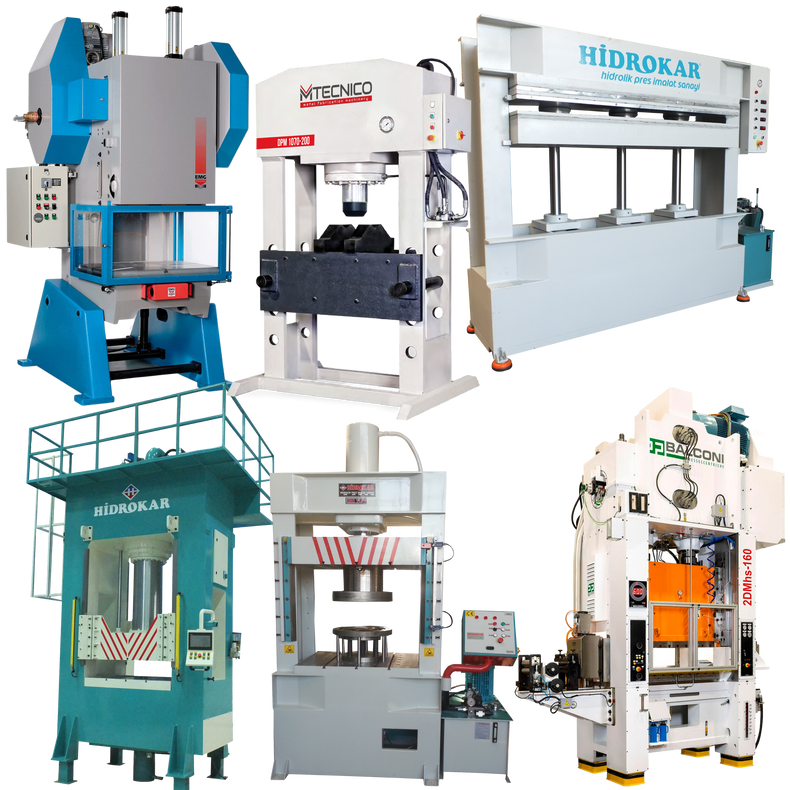Hydraulic and Mechanical presses are two of the most common types of industrial machinery used in manufacturing and metalworking applications. These machines can apply a tremendous amount of force to a workpiece, allowing it to be shaped, cut, or formed in a variety of ways. In this blog, we'll explore the differences between hydraulic and mechanical presses, and discuss some of their key features and applications.
Hydraulic Presses:
Hydraulic presses use hydraulic cylinders and pistons to apply force to a workpiece. A hydraulic cylinder is a device that uses fluid pressure to move a piston, which in turn generates force. In a hydraulic press, the fluid is typically oil, which is pumped into the cylinder to move the piston and apply force to the workpiece. Hydraulic presses are capable of generating very high forces, making them ideal for applications that require a lot of pressure.
One of the main advantages of hydraulic presses is their versatility. They can be used for a wide range of applications, from metal stamping and forging to plastic molding and assembly. Hydraulic presses can also be customized with different types of tooling and accessories to perform specific tasks, such as deep drawing, punching, and bending.
Another advantage of hydraulic presses is their ability to apply force evenly across a workpiece. Because the hydraulic fluid is incompressible, the force applied by the piston is distributed evenly across the entire surface of the workpiece. This can help to prevent distortion or deformation and ensure that the finished product is of high quality.
Mechanical Presses:
Mechanical presses, on the other hand, use a mechanical drive system to apply force to a workpiece. A mechanical press typically consists of a flywheel, crankshaft, and connecting rod, which work together to generate force. When the operator presses the pedal or button, the flywheel begins to turn, which in turn drives the crankshaft and connecting rod. The force generated by the connecting rod is then transferred to the ram, which applies force to the workpiece.
One of the main advantages of mechanical presses is their speed. Because they rely on a mechanical drive system rather than hydraulic fluid, they can operate much faster than hydraulic presses. This makes them ideal for high-volume production applications, where speed is of the essence.
Another advantage of mechanical presses is their simplicity. They have fewer moving parts than hydraulic presses, which makes them easier to maintain and repair. Additionally, because they don't require a hydraulic system, they can be more cost-effective in the long run.
Applications:
Both hydraulic and mechanical presses are used in a wide range of industries, including automotive, aerospace, construction, and manufacturing. Some common applications of hydraulic presses include metal forming, stamping, and extrusion, while mechanical presses are often used for cutting, punching, and blanking.
Hydraulic presses are often used in applications that require very high forces, such as deep drawing and forging. They are also ideal for applications that require a high degree of precision, such as forming complex shapes or producing parts with tight tolerances.
Mechanical presses, on the other hand, are often used in applications that require high production rates, such as stamping and cutting. They are also well-suited for applications that require a lot of force but don't need the precision of a hydraulic press, such as punching and blanking.
Conclusion:
In conclusion, hydraulic and mechanical presses are two of the most important types of industrial machinery used in metalworking and manufacturing. Each type of press has its own advantages and disadvantages and is suited to different types of applications. Hydraulic presses are ideal for applications that require very high forces or a high degree of precision, while mechanical presses are better suited for applications that require high production rates or a lot of force but don't require the precision of a hydraulic press.

